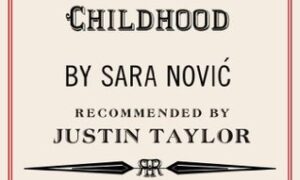 The Enchanted by Rene Denfeld
The Enchanted by Rene Denfeld
My rating: 4/5 cats




this is a grim and haunting story that takes place in a crumbling, but still occupied, prison. the narrative is shot through with threads of magical realism which ordinarily would be employed as contrast to lessen the horror of the surroundings, but here these flourishes frequently intensify the bleakness.
i’m going to refrain from talking about the book’s overall message because death penalty stuff always brings out the cranks on both sides of the issue, and ain’t nobody got time for that. but i will say that i fully support the death penalty when it comes to bedbugs, because their recidivism rate is somehow more than 100% and also they are assholes.
instead i will focus on the story and the writing, because it’s a pretty impressive debut novel from someone who’d only written nonfiction before this. the narrator is an unnamed-until-the-end View Spoiler » prisoner in solitary confinement in the underground death row section of the prison. he does not speak, but he escapes his surroundings through books and witnesses the enchantment running through the prison: golden horses galloping, tiny men with hammers in the walls, and the creepy flibber-gibbets. the less said about them, the better. but he sees so much more – well beyond the confines of his bars, and he serves as an omniscient narrator who tells the stories of the other characters: “the lady,” “the priest,” “the warden,” and york, a fellow prisoner whose death date is fast approaching.
this structure makes it hard to say what’s real and what’s imagined. i assume we are meant to sort of “forget” that this prisoner would have no access to witnessing the scenes he relates, much less have access to the other characters’ thoughts, but it’s hard to ignore sometimes. as much as i love an unreliable narrator, passages like this one, where he admits to a blurring between reality and fantasy, are almost begging you to doubt what happens outside of the bars:
Sometimes, when reading a book, I would think of the other people who might have touched it before it was donated. A nice woman who lay down with her baby for a nap might have held the book I was reading. I could see her, lying in a sundress on faded rose-printed cotton sheets, the book splashed open in the sunlight. A little of that sun could have soaked into the pages I was touching.
After a time, it seemed that the world inside the books became my world. So when I thought of my childhood, it was dandelion wine and ice cream on a summer porch, like Ray Bradbury, and catching catfish with Huck Finn. My own memories receded and the book memories became the real memories, far more than the outside, far more even than in here.
but it doesn’t take away from the story much, it’s just a little niggle that sticks in your brain. or my brain, anyway. i have a sticky brain.
the story itself is much larger than you’d expect from such a short book. “the lady” is a death penalty investigator assigned to york’s case, trying to save him from his impending death, which death york emphatically does not want saving from. through her inquiries and research, her own past is also revealed, much of it troublingly similar to york’s. “the priest” is actually a defrocked priest, whose loneliness calls out to the lady’s own, and they begin a friendship within the walls of the prison that provides a tentative beauty in all the misery. along with the warden, these two characters show that even people who are “free” have bars around them – a kind of self-imposed isolation resulting from guilt, fear, illness, and the weight of the past.
there are large horrors to be found here; stories of rape and brutality and the white-haired boy, but the ones that really stuck in me were the smaller-scale events: what striker did to the book, the line Troy had a party, the forgotten inmate, the soapy gray dishwater surrounding the food… although that’s a lie – the white-haired boy will also stick in my head for a long, long time. but there are other large and more central-to-the-story horrors with less staying power in my craw, probably because they were more familiar. which is in itself a horrifying statement.
denfeld has written a quiet but powerful story here, drawing on her own experiences as a death penalty investigator. and while i didn’t always agree with it, and while i thought the magical realism elements didn’t always work or contribute, this is still a gorgeously-written piece of fiction, with a lot to chew on after it ends.
here’s a passage that i think showcases the gloomy beauty of her prose:
The important part is the window on the far wall. If the inmates strain hard, they can see the sky through that window. The clouds might be fluffy and white one day, traced with pink and mauve the next, or lit on fire from a sunset.
The window is the reason the death row inmates go to the visiting room to see their lawyers and investigators. The lawyers think their clients want to see them. No, they want to see the window. When the visit ends and they are led in chains back to the dungeon underground, where they spend their days trapped in a six-by-nine cell with no window and no fresh air, a flat cot and open toilet with an endless circle of dark brown in the bowl and a flickering lightbulb in a metal cage, they can remember that scrap of sky. They might go months down in the dungeon between visits, even years. But on those rare days when they are summoned to the visiting room, they know they will see the sky.
When they return to the dungeon, they can tell the others. “It was reddish today, and the clouds were the color of plums,” they might say. Or “I saw a bird – so pretty.” No one will dispute them. There are some things people lie about in here – okay, people lie about most things in here. But there is one thing on death row that no one lies about, and that is what they saw in those scraps of sky.
i await her second novel…





